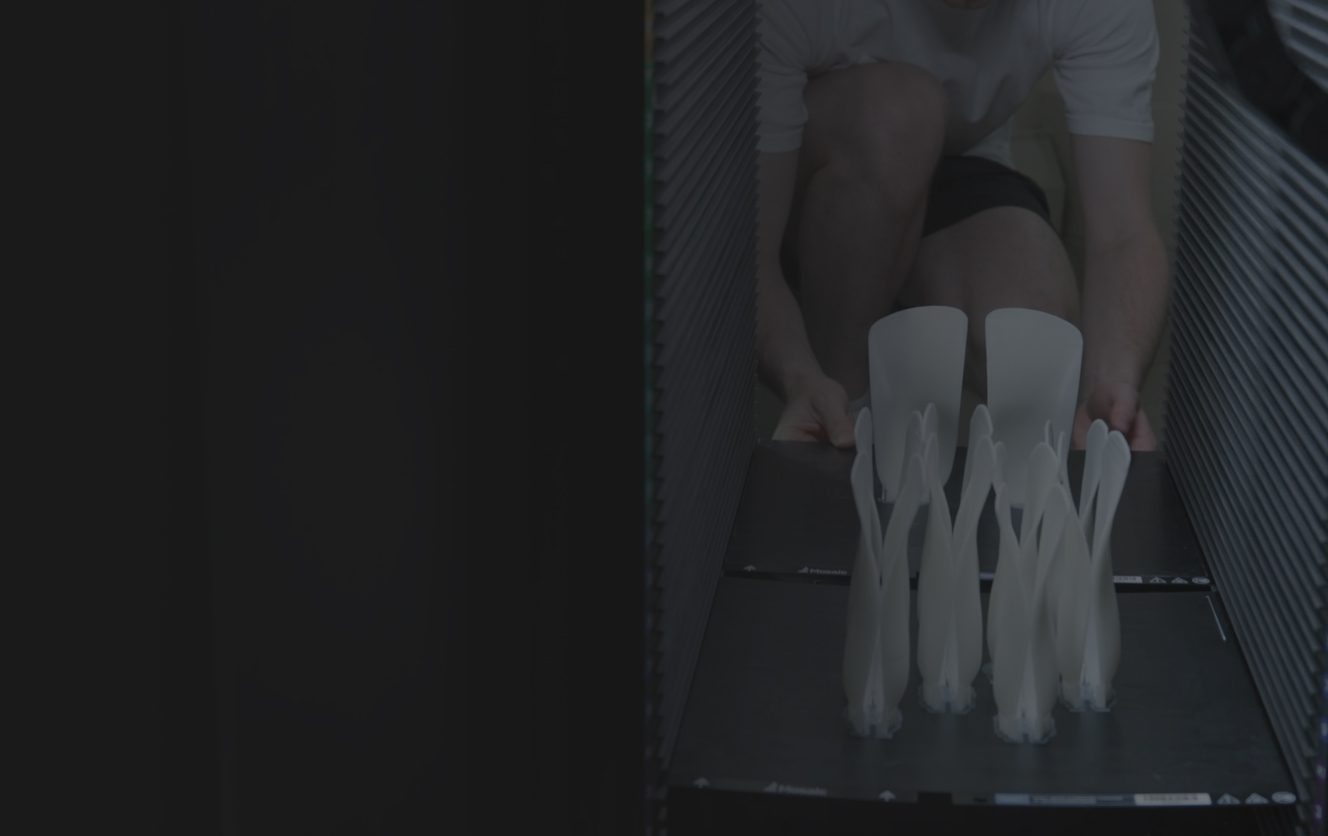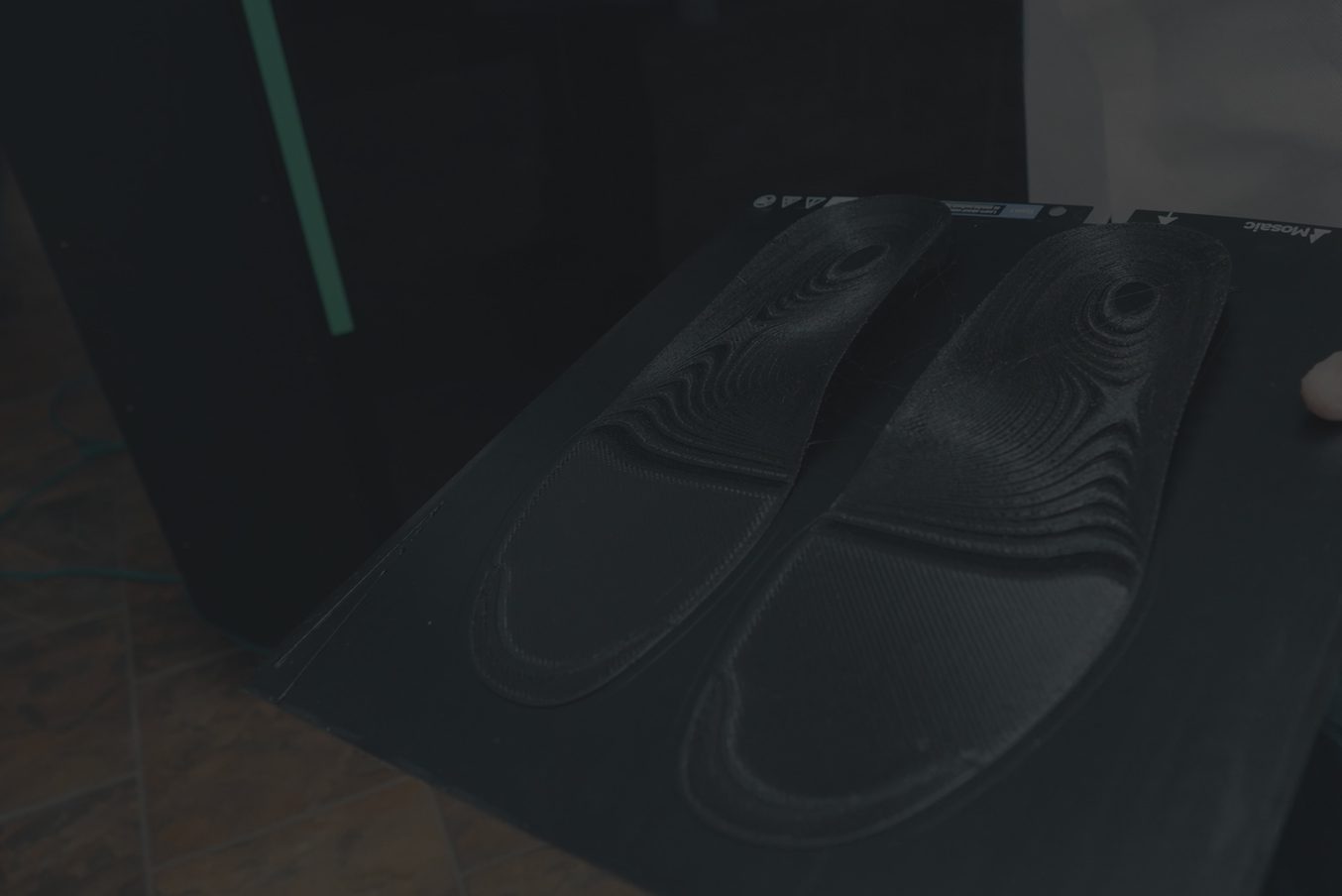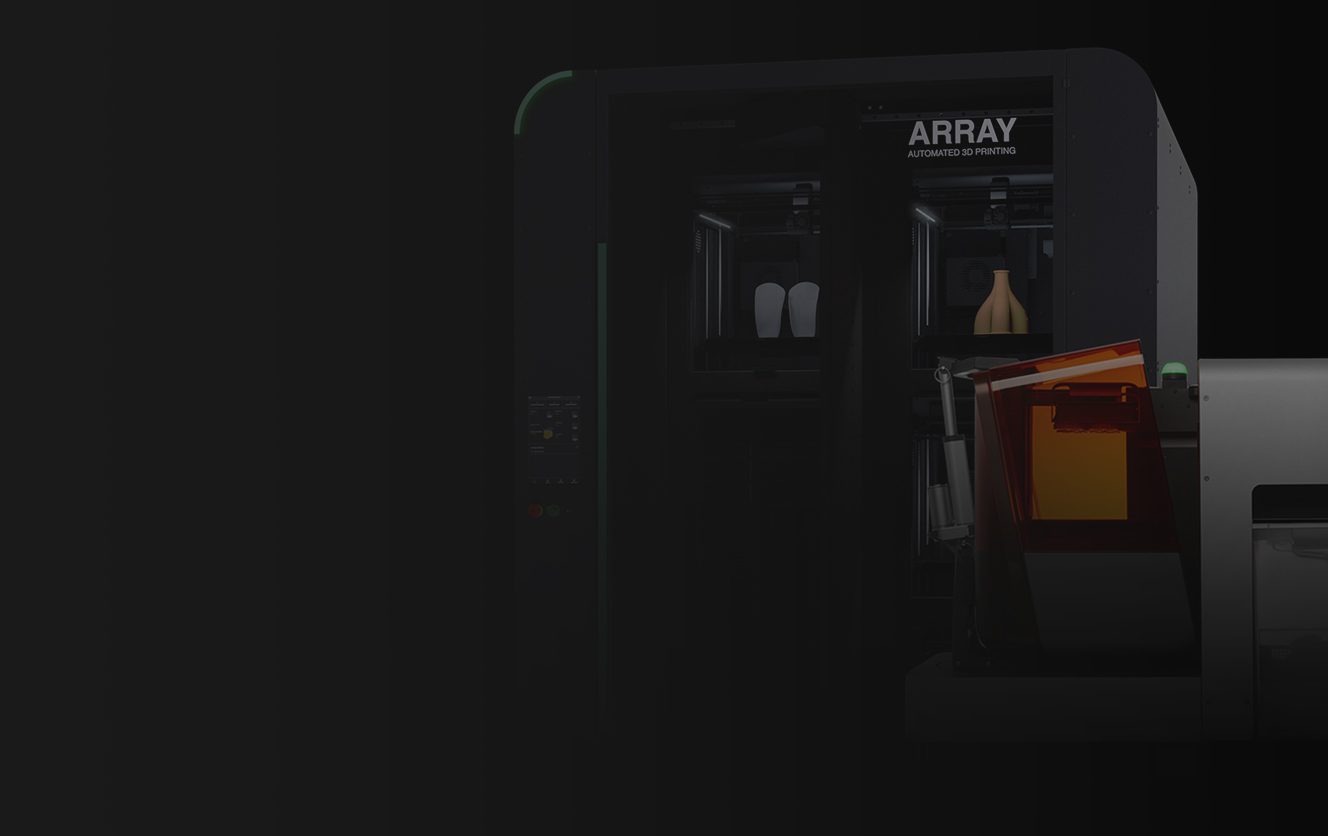Overview & Introduction: What are orthotics and how do they work?
What exactly is an orthotic? The term orthotic casts a wider net than one might expect, often used to refer to foot orthoses, braces and splints, and support devices. Orthoses are also classified by either function paralysis orthoses and relief orthoses. Orthotics falls under the broader O&P (orthotics and prosthetics) industry as their certification bodies and practitioners often overlap. These medical devices are categorized into the following four general categories:
- Orthotics of the lower extremities
- Orthotics of the upper extremities
- Orthotics of the trunk
- Orthotics of the head
This article will work to examine foot orthotics, often referred to as insoles, in specificity. So, let’s take a deeper look at how foot orthotics work. Foot orthotics are manufactured to address:
- Support and alignment
- Pressure redistribution
- Improved biomechanics
These medical-grade insoles are designed specifically to provide support to the arch of the foot, improving overall alignment and reducing stress on joints, they also work to redistribute pressure on the foot, alleviating pain and discomfort caused by conditions like plantar fasciitis. Orthotics can even correct abnormal walking patterns and improve the way the foot functions during walking, running, and other physical activities.
Foot orthotics typically fall into two main categories: functional and accommodative.
Functional

Accommodative
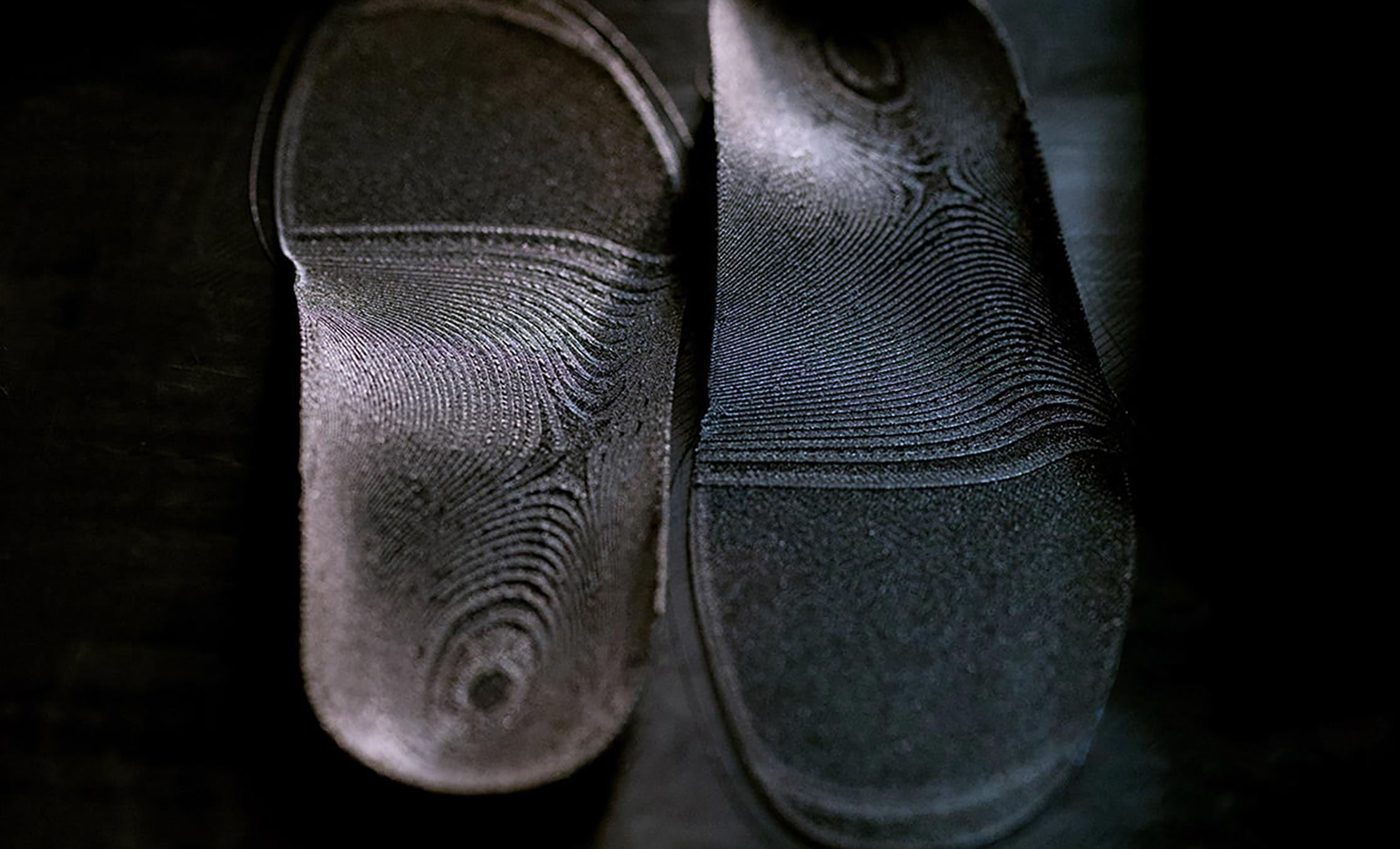
Orthotics Manufacturing: Traditional vs. 3D Printed Insoles
Traditional Methods: Orthotic Milling Machines & Their Challenges
Traditional manufacturing processes such as CNC Milling and Thermaforming are tried and true, however the practices are costly, and lengthy in terms of turnaround times. This presents challenges for labs and practitioners alike:
- Dependence on legacy, manual workflows that are difficult to scale
- Multi-step processes that require highly skilled labor at every stage
- Quality and consistency heavily reliant on the technician’s expertise
- Increasing costs of materials and labor impacting overall profitability
- Long lead times that limit production capacity and delay patient care
The traditional step-by-step milling and forming processes requires an undeniable amount of labour hours performed by skilled professionals. The reality is the number of orthotics manufacturers is declining every year, leaving them spread too thin and creating a backlog for their patients. This challenge has left a gap in the orthotics production industry and labs are searching for ways to fill that gap whilst still providing end-patients with the comfort, care, and quality required to fit their rigorous standards.
With lesser skilled laborers entering the workforce one would reasonably assume that this gap is going to widen each year, leading to an insurmountable pressure on labs to increase their production throughput. So, how exactly do labs combat this rising issue? Enter–the digital manufacturing era.
The Digital Era: 3D Printed Custom Orthotics
The adoption of digital workflows and automation has reshaped nearly every corner of healthcare manufacturing, and orthotics is no exception. While hesitation to adopt new technology is natural, the reality is that those who embrace digital tools are gaining a significant edge in scalability, precision, and patient satisfaction.
3D printing orthotic insoles is by no means a brand new technology, but with the rising popularity of digital workflows, labs and clinicians are actively seeking solutions that can scale alongside growing demand. The introduction of automated additive manufacturing technology has enabled the large-scale production of 3D printed insoles with unmatched precision, consistency, and speed.
3D printing, also known as additive manufacturing, creates orthotic devices by building them layer by layer from digital 3D models. Instead of subtracting material as in milling, 3D printing adds material only where needed, resulting in less waste and greater design freedom.
Several printing methods are used in orthotics production today:
Fused Filament Fabrication (FFF)

Selective Laser Sintering (SLS)
Stereolithography (SLA)
Traditional Fitting Practices vs. 3D Scanning for Foot Orthotics
The Traditional Workflow
For decades, clinics and labs have relied on a traditional, largely manual workflow to design and manufacture orthotics. The process often starts with foam box impressions or plaster casting to capture the patient’s foot shape, followed by physical modification of the model, then milling or thermoforming of the orthotic itself.
While some labs still use these methods, they’re now implementing newer technologies and practices to bolster their workflow. Many have since adopted 3D scanning to capture digital foot models, even if the rest of their methods remain manual. This shift reflects a growing move toward more efficient, hybrid approaches that blend traditional craftsmanship with modern technology.
Each stage is often handled separately, sometimes even by different facilities, leading to a fragmented workflow with too many touchpoints. Communication between clinics and labs can become inconsistent, turnaround times stretch from days to weeks, and even minor adjustments require retooling and remanufacturing.
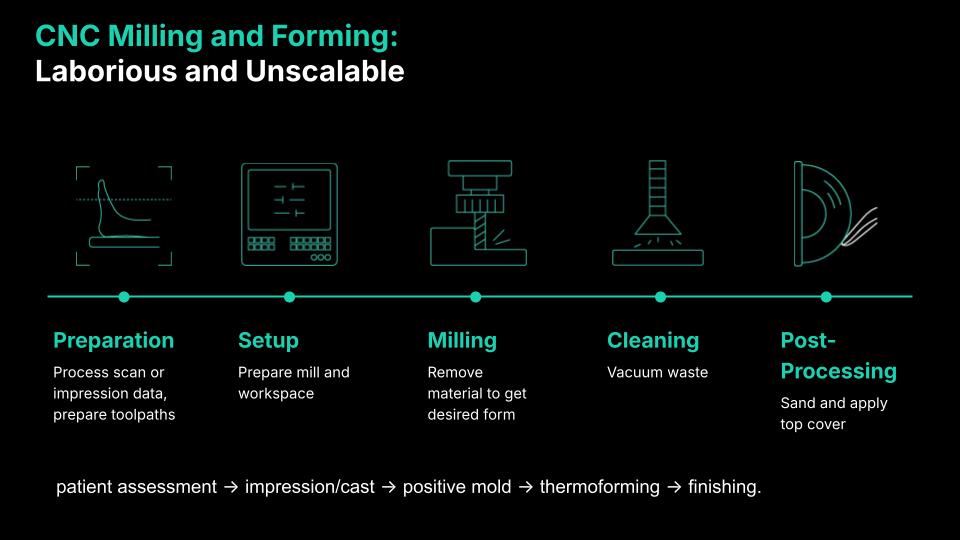
This workflow, while well-established, is often time-intensive and reliant on the experience and precision of skilled technicians. As a result, variations in quality and occasional delays in communication or production can occur. For patients, this may lead to longer wait times or the need for multiple visits to achieve the right fit. For clinics, it can present challenges in managing workloads and maintaining efficiency while continuing to deliver high-quality, personalized care.
The Digital Workflow
The shift to a digital workflow transforms every stage of the orthotic creation process from data capture to design to manufacturing, into a seamless, fully integrated pipeline. Clinics can now capture foot data using 3D scanners, replacing messy and inconsistent plaster casts. These scans can be uploaded directly into cloud-based platforms like LutraCAD, which offer intuitive software interfaces for digital design customization and patient management.
1.
Patient is scanned by clinician
2.
Clinician sends file to orthotics lab
3.
Lab technician adjusts scan using LutraCAD’s orthotics & insole software
4.
Completed file is sent to Canvas for slicing and 3D print management
5.
File is printed using Mosaic’s additive solutions
6.
Completed orthotic is collected from storage cart and inspected for quality
7.
Orthotic is sent to clinician; patient is fitted
3D printing streamlines the orthotics workflow from start to finish. A clinician scans the patient’s foot digitally, a CAD designer adjusts the model for correction or comfort, and the file is sent directly to print. This eliminates casting, molding, and much of the manual fabrication process, allowing for faster turnaround and greater consistency.
Benefits of 3D Printing for Orthotics:
- Scalability: Easily produce multiple pairs without adding significant labor.
- Customization: Every orthotic is digitally tailored to the patient’s anatomy and condition.
- Consistency: Digital files ensure repeatable accuracy across batches and facilities.
- Efficiency: Reduces manual touchpoints, material waste, and rework.
- Durability: Advanced polymers like PP and TPU maintain shape and flexibility over time.
- Comfort: Variable density designs and lattice structures can be fine-tuned for optimal support and cushioning.
Many labs worry that adopting a digital workflow means an overwhelming learning curve or costly software infrastructure. The truth is, most modern platforms are designed to be user-friendly and require minimal training. Adjustments to orthotic parameters such as arch height, posting angles, and cushioning zones can be made in real-time, with instant feedback and file generation. These digital files are then sent straight to 3D printers for production, eliminating redundant steps and drastically reducing errors and remakes.
Evaluating Patient Outcomes
Traditional Fabrication’s Impact Patient Outcomes
Traditionally crafted insoles have long been an effective solution for reducing pain and discomfort associated with conditions such as plantar fasciitis and arch collapse. They provide essential support, improve alignment, and help redistribute pressure, all of which enhance the biomechanical structure and functionality of the foot during walking and running.
However, the fabrication process for traditional insoles can be quite time-consuming. Patients often face a turnaround time of two to three weeks from prescription to fitting, leaving them to manage ongoing discomfort while they wait. If insurance companies require an estimate or preauthorization, the process can be extended by an additional three to four weeks, further delaying relief and treatment.
Improving Patient Care With 3DP Insoles
3D-printed orthotics significantly enhance patient outcomes by delivering a faster, more streamlined, and digitally driven experience. The use of digital scanning and design enables rapid turnaround times, reducing the long waiting periods traditionally associated with orthotic fabrication. This modern, technology-based approach aligns with patient expectations for convenience and personalization, creating a smoother and more satisfying treatment journey.
Beyond efficiency, 3D printing allows for truly patient-specific designs that improve both fit and therapeutic performance. Customization ensures a superior anatomical match, leading to greater comfort, better pressure distribution, and improved functional outcomes.
Advanced design features such as latticing and variable density offer targeted support and flexibility, while enhanced ventilation helps manage moisture for all-day comfort. Additionally, 3D-printed orthotics are lightweight, discreet, and aesthetically appealing, making them easier to wear and to transfer between shoes, which encourages consistent use and ultimately supports better long-term patient results.
Comparing Operational Efficiency & Workflow Automation
For clinics, the result is a faster, more transparent process that enhances patient care. Prescriptions and modifications are stored digitally, making follow-ups and reorderings easier and more accurate. For labs, this digital infrastructure unlocks scalable production. These efficiencies allow labs to reduce lead times, increase throughput, and allocate skilled technicians to higher-value tasks rather than repetitive manual work.
Most digital platforms offer dedicated onboarding, customer support, and integration pathways tailored to existing clinical processes. With demand for orthotics rising and skilled labor becoming harder to find, evolving toward a digital-first workflow isn’t just about innovation, it’s about staying efficient, competitive, and patient-focused in a rapidly shifting healthcare environment.
Comparing Functionality and Performance in Orthotics Materials
For clinics, the result is a faster, more transparent process that enhances patient care. Prescriptions and modifications are stored digitally, making follow-ups and reorderings easier and more accurate. For labs, this digital infrastructure unlocks scalable production. These efficiencies allow labs to reduce lead times, increase throughput, and allocate skilled technicians to higher-value tasks rather than repetitive manual work.
Insole Material & Their Longevity
Traditional orthotics, while effective, can degrade over time due to the materials used and the manual nature of their construction. Foam compression, lamination wear, and inconsistencies in forming can lead to a reduced lifespan especially under high-use conditions.
By contrast, 3D printed orthotics are built using advanced polymers such as polypropylene (PP) or TPU blends, engineered for greater durability, flexibility, and resistance to wear. These materials maintain their structural integrity even under repetitive stress, resulting in longer-lasting orthotics and fewer replacements over time.
Mosaic has two proprietary materials designed for the needs of the orthotics industry; Aero and Form.
Form and Aero are available through Mosaic’s website or directly via our sales team. For more information, contact sales@mosaicmfg.com
Aero also enables multi-density zoning within a single print, allowing for targeted cushioning and rigidity exactly where it’s needed. This zoned performance is especially valuable in addressing complex foot conditions where offloading pressure from high-risk areas is critical. Traditional manufacturing methods struggle to achieve this level of precision and customization, making Aero a powerful solution for both preventative and therapeutic orthotic design.
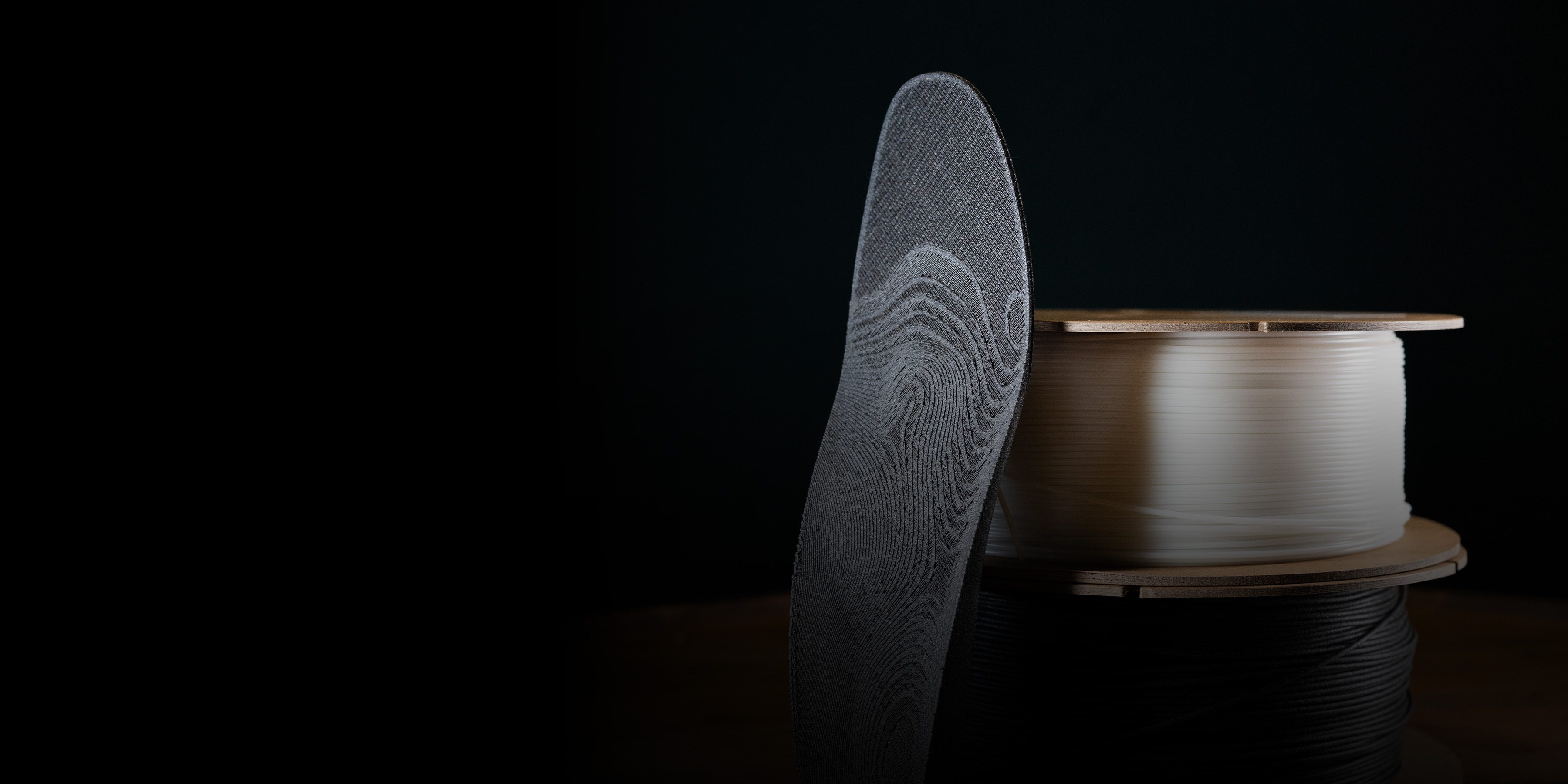
Consistency and Quality
Traditional orthotics, while effective, can degrade over time due to the materials used and the manual nature of their construction. Foam compression, lamination wear, and inconsistencies in forming can lead to a reduced lifespan especially under high-use conditions.
One of the most significant benefits of 3D printing is its ability to deliver consistent, repeatable results at scale. Digital design files ensure that each orthotic produced matches the original specifications precisely regardless of when or where it’s printed.
This level of repeatability is difficult to achieve with traditional methods, where variability in materials, technician technique, and equipment settings can affect the final product. For clinics and labs, this means fewer remakes, more predictable outcomes, and greater confidence in the performance of each orthotic delivered.
Mosaic’s hardware comes equipped with Canvas, a digital workflow platform built to streamline every stage of orthotics production. Available in both desktop and cloud versions, Canvas gives clinics and labs complete visibility into their design and fabrication processes, which connects scanning, modeling, and printing into one seamless, automated workflow. This allows orthotics producers to manage digital orders efficiently, reduce manual steps, and ensure consistent, repeatable results for every patient.
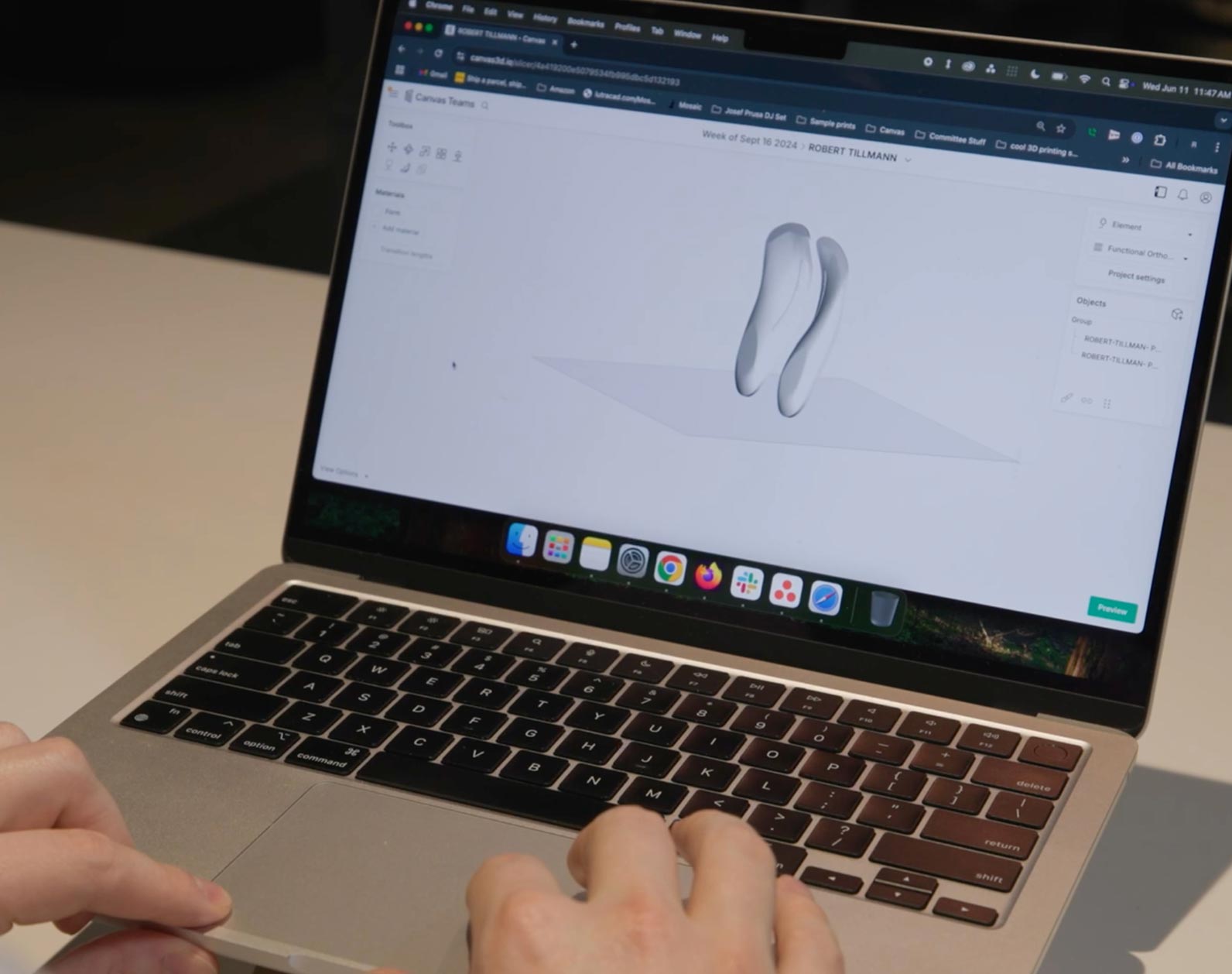
Canvas integrates seamlessly with leading digital scanning and CAD tools, such as LutraCAD and Taika3D, to streamline the orthotics design workflow from scan to print.
In software systems such as Canvas clinicians are able to store a patient’s digital file in a centralized parts library, ensuring every pair of orthotics is highly customized and personalized.
Comparing Production Cost & Product Margins
Traditional Methods
Traditional orthotics manufacturing can be resource-intensive. Material waste from milling or thermoforming, long production timelines, and the need for highly skilled labor all contribute to higher per-unit costs. Additionally, maintaining inventory of blanks, molds, and tooling adds overhead and limits flexibility. As demand increases, scaling production with traditional methods often requires a proportional increase in staffing and equipment; an approach that’s not always financially sustainable for smaller labs or clinics.
Traditional Method’s Cost To Produce:
- Estimated total cost to produce per pair of functional orthotics using CNC: $80-95
- Estimated total cost to produce per pair of functional orthotics using thermoforming: $65-90
- Estimated total cost to produce per pair of accommodative orthotics using CNC: $55–70
- Estimated total cost to produce per pair of accommodative orthotics using thermoforming: $50–65
Where 3DP Saves on Cost
3D printing offers a leaner, more cost-effective model. Because parts are built additively and on demand, there’s minimal material waste and no need for stockpiling semi-finished goods. Digital workflows reduce labor time, streamline production, and enable a single technician to manage significantly more volume. With durable materials and high repeatability, fewer remakes are needed which in turn further protects margins.
Estimated Cost To Produce With Mosaic Array:
- Estimated total cost to produce per pair of accommodative orthotics using Array: $9-13
- Estimated total cost to produce per pair of functional orthotics using Array: $10-20
This shift not only helps labs reduce operating costs but also opens the door to higher profitability per unit, all while maintaining or even improving product quality and patient satisfaction in just a fraction of the time involved in traditional outsourcing.
Scaling Orthotics Production in a Competitive Market
In today’s competitive orthotics landscape, clinics and labs are under pressure to stand out. Not just through quality care, but also speed, reliability, and the overall patient experience.
Traditional methods can make it difficult to meet rising consumer expectations, especially when turnaround times are long and production capacity is limited. 3D printing provides a strategic advantage, helping clinics differentiate by offering faster, more customized, and premium services that patients value.
From a business perspective, digital manufacturing addresses key operational pain points. Profitability improves through lower material waste, reduced labor costs, and significantly higher margins per device. With same-day or next-day turnaround possible, clinics can serve more patients in less time which directly boosts revenue per patient.
Digital workflows also allow labs to scale efficiently without needing to expand headcount or invest in additional equipment. Beyond speed and cost savings, 3D printing ensures consistent, repeatable quality, regardless of who operates the system or where it’s produced. This level of predictability, paired with personalized design options and a modern patient experience, positions 3D printed orthotics as a clear differentiator in a market demanding innovation and efficiency.
Commitment to Customer Success
Mosaic’s mission extends beyond providing hardware and software. Mosaic is committed to a true partnership that ensures your clinic or lab reaches its full potential in custom orthotics production. From the moment you evaluate our system, we work side‑by‑side with you: first helping you map your current workflow, understand your throughput targets, and identify the bottlenecks holding you back. Our goal is not simply to sell you a machine but to ensure that your adoption of 3D printing becomes a strategic advantage.
With our flagship automated platform, the Array, we offer a turnkey hardware solution built for scalable, on‑demand production. This high-powered FFF 3D printing system features four individual printers, an integrated robotics gantry, automated material‑pod switching, and system automation. This is complemented by our integrated print‑job management software, Canvas, which streamlines the file upload, job queueing and monitoring process so that you’re printing high‑precision orthotics reliably and with minimal manual intervention.
At Mosaic, our team understands that making the digital shift can feel daunting for labs used to traditional workflows. That’s why our deployment services are structured and supportive: our team works through on‑site assessments, workflow customization, training, and ongoing optimization.
Ready to Embrace the Future of Orthotics?
The shift toward digital manufacturing isn’t just a trend. It’s a strategic move that clinics and labs are making to stay competitive, efficient, and patient-focused. 3D printing offers measurable benefits in speed, cost, scalability, and product quality, and Mosaic is here to help you implement that transformation with confidence. Whether you’re just exploring or ready to scale, we’ll meet you where you are and help build a solution that fits your workflow.
Let’s talk about how Mosaic can support your digital transition. Book a demo or get in touch with our team to see how your lab or clinic can start producing custom orthotics faster, smarter, and more profitably.
Ready to scale your othotics lab?
See how Mosaic can help you produce 500+ custom insoles per month with Array

